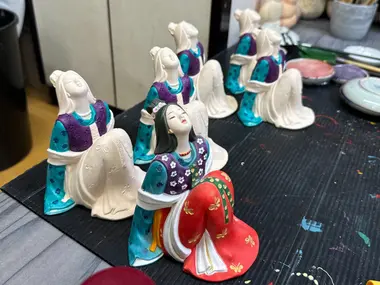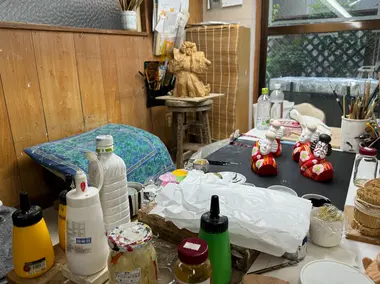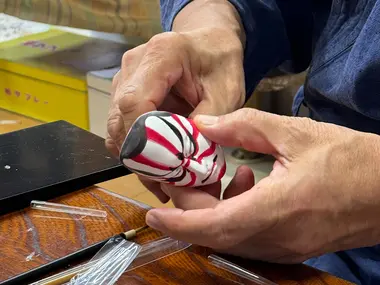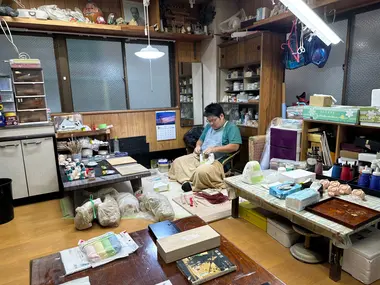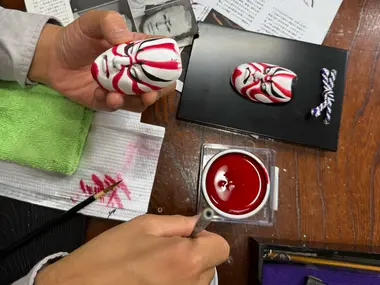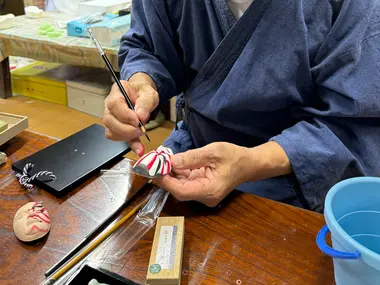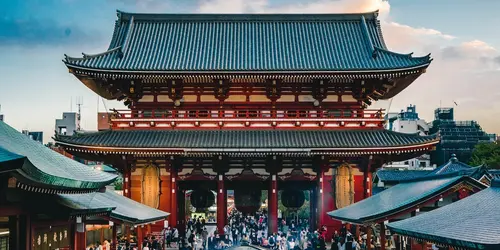Hakata Ningyo: The collectible crafts of Fukuoka
- Published on : 29/10/2024
- by : Joshua
- Youtube
Despite their relatively modest origin, the Hakata Ningyo dolls have evolved into an artisan craft like no other, rich in detail and color. They make for great collectibles and souvenirs that communicate the spirit of Fukuoka.
There's a sense of wonder that comes when looking at a Hakata Ningyo (or “Hakata Doll”) firsthand. From the vibrant coloration to the expressive face, it can be hard to believe such a piece of art originates from earthy clay. However, underlying this exquisite artistry exists an humble history centuries in the making.
A history of craft and collection
Indeed, Hakata Ningyo originally started off as small toys made from local clay originally intended for tile-making. It wasn’t until later on that their production evolved into a refined art form, elevated by master artisans that incorporated more realistic human proportions and color theory into their designs, along with hyper-detailed faces that are notable for their lifelike expressions.
A distinct feature of these dolls is that they are fired without a glaze, with coloring being later added with hand-painting over a base white pigment. This challenging yet worthwhile endeavor results in pieces that are renowned for their vivid coloration. After the end of World War II, during the reconstruction era of Japan, Hakata Ningyo reached worldwide acclaim after being popularized as souvenirs.
Into the modern day, authentic Hakata Ningyo are defined by an in-depth flow of steps that encompass talents from multiple craftsmen over an extended period of time. While the precise creative process varies from maker to maker, in general, creating Hakata Ningyo entails the following:
- Fine clay sourced from the Fukuoka area is kneaded and prepared for shaping.
- The model of the final product is created, often being motifs of Kabuki actors, women, or children.
- The mold for the model is created for forming the clay.
- The clay is shaped using the mold and then fired without a glaze.
- After firing, a white pigment base layer is added, with the final detail coloring applied by hand.
- The face is the final part to be added. The facial expression and other finer details are contributed by only the most experienced Hakata Ningyo artisans.
- The final product is completed after two to three months of demanding and intensive work. This is a true labor of love for the storied craftsmen who have dedicated themselves to the art.
Experiencing the Hakata Ningyo-making process yourself!
The city of Fukuoka takes great pride in Hakata Ningyo-making, and visitors to the city can visit a workshop for a behind-the-scenes look at the process. This often includes a chance to try the painting and coloring process, arguably the most intensive element in the creative process. Dolls depicting Kabuki artists in particular demand a lot of time and effort, but simultaneously result in some of the most striking dolls. The matte white pigment layer allows for the contrasting colors to pop. For the Hakata Ningyo of women in Kimono, the face is only further complimented by incredible detail of the kimono themselves, often featuring rich floral designs and ornate decoration on the obi belt portion. Truly, to a point, they appear like real-life people, frozen in time and in their most picturesque form.
Timeless Treasures
One can’t help but look at Hakata Ningyo and immediately think, “Japan.” Not just from the motifs that are directly taken from Japanese culture, but the very clear attention to detail so heavily associated with traditional crafts of the country. To admire the history of these dolls is to simultaneously appreciate the time invested in learning about the creative process as well as the time taken to make each doll themselves. As more and more visitors to the country learn about the roots of the culture, the profundity of Japan’s shokunin grows increasingly apparent. Hakata Ningyo can therefore serve both as a cherished souvenir and as an appreciation of the artisans dedicated to the traditional crafts of their homeland.
If you want to create these pieces of art yourself, you can book this activity here.
Address, timetable & access
More details and reservation for the Hakata Ningyo-making experience
Address
2-14-24 Shirogane
Chuo-ku, Fukuoka-shi
810-0012
Japan
Website
https://enjoykyushu.com/detail/bokun/930229/

